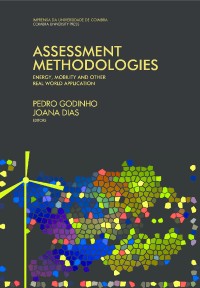Please use this identifier to cite or link to this item:
https://hdl.handle.net/10316.2/38158| Title: | A bi-regional (rectangular) Input-Output model for Portugal: centro and rest of the country | Authors: | Ramos, Pedro Cruz, Luís Barata, Eduardo Parreiral, André Ferreira, João-Pedro |
Keywords: | Input–Output Models;Household Income;Regional Economics | Issue Date: | 2015 | Publisher: | Imprensa da Universidade de Coimbra | Journal: | http://hdl.handle.net/10316.2/38126 | Abstract: | Regional Input-Output models aim to quantify the impacts on industry’s outputs, and other economic indicators, of different final demand vectors for goods and services produced in the same or in different regions. These models are well suited for regional economic analysis as they combine inter-industrial and interregional economic interdependencies. MULTI2C is a general flexible procedure, developed by a group of researchers from the University of Coimbra, Portugal, that allows for the construction of that kind of models for different geographic configurations. This work explores the construction of a bi-regional input-output model for Portugal, based on the MULTI2C approach, considering two regions: the NUT II Centro of Portugal and the Rest of the Country. This model considers rectangular matrices with 431 products and 134 industries. Further, it considers different types of households according to their main source of income, i.e., labour earnings, capital income, real estate income, retirement benefits and other social transfers. This modelling framework may be closed with respect to the consumption of different household’s types, but this paper considers as endogenous the labour earnings type. Besides the model structure and the methodological choices for its construction, this work focuses on estimating interregional trade.Finally, the model is used to assess the impacts in the Centro region of Portugal, and in the Rest of the Country, derived from a shift in income’s distribution in the Centro region, consisting in a reduction of the labour share, compensated by an increase in business investment, which however do not confine to the NUT II Centro of Portugal but, into some extent, spillover to the Rest of the Country. | URI: | https://hdl.handle.net/10316.2/38158 | ISBN: | 978-989-26-1038-2 978-989-26-1039-9 (PDF) |
DOI: | 10.14195/978-989-26-1039-9_12 | Rights: | open access |
| Appears in Collections: | Assessment methodologies: energy, mobility and other real world application |
Files in This Item:
| File | Description | Size | Format | |
|---|---|---|---|---|
| a_bi-regional__rectangular__input-output_model_for_a_portugal.pdf | 1.07 MB | Adobe PDF |  |
Items in DSpace are protected by copyright, with all rights reserved, unless otherwise indicated.
